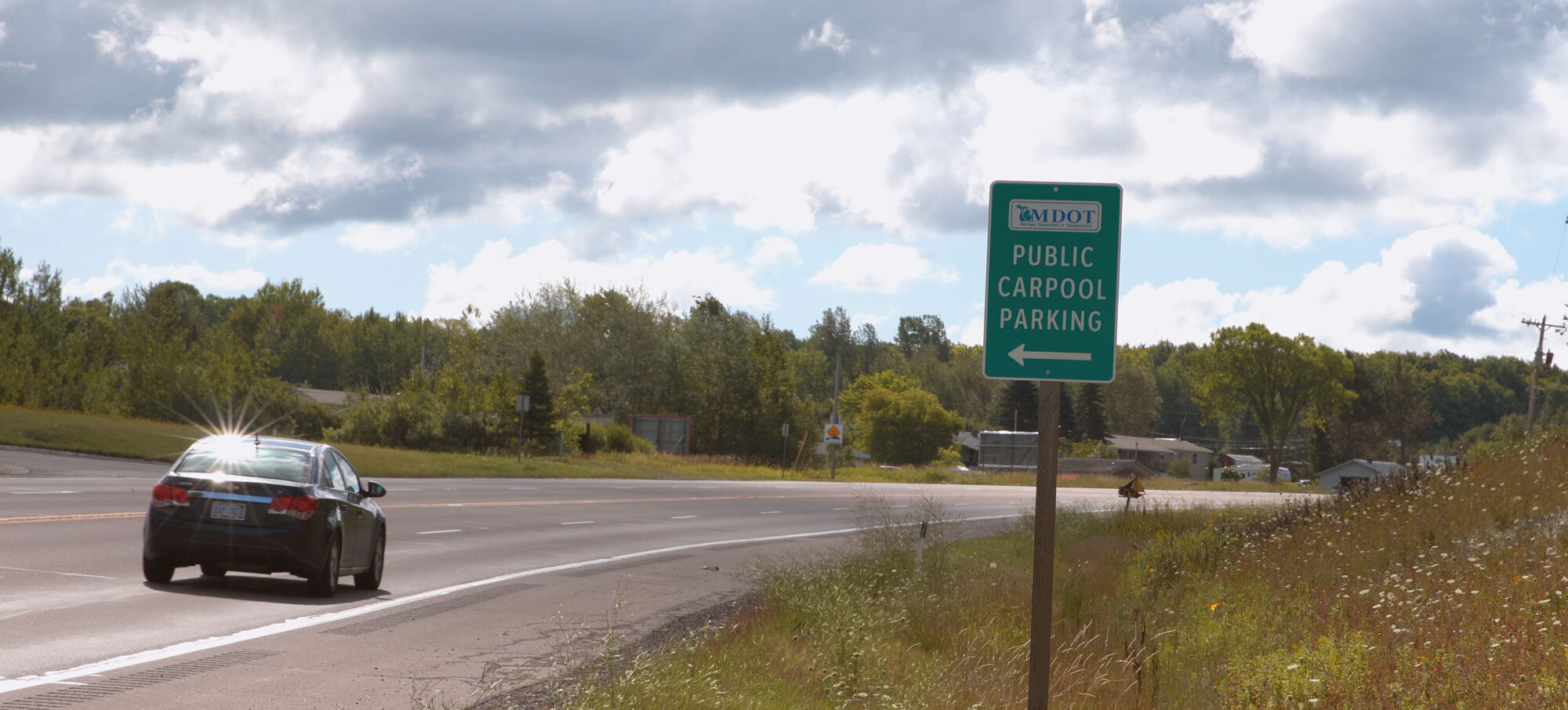
Carpool in the Western u.p.
In this section of the website, you will find information on what carpooling is, carpool etiquette, and a map of park-and-ride lots where passengers can meet at a central location. Carpooling can only work in our area if interested people with similar routes communicate and connect, and that is what this application is for. We encourage you to try it out!
What is carpooling?
What if you don’t have access to a regularly scheduled transit route and you need a ride at the same time to the same place every day? Most people drive, but if you would rather save some money and escape the in-car solitude of the daily commute, ridesharing or carpooling is an option. If you are unable to drive, it’s even better.
Carpooling is the second-most-used commuting method in the Western U.P. But when trying to set up new carpools, it is very difficult in a large rural region with far-flung population centers to achieve a “critical mass,” or effective minimum number of carpoolers to provide enough ride options to be useful. We provide resources here to help make this happen.
How To Carpool
There are several considerations that potential carpoolers must take into account. Since money is always number one, participants must decide how the daily drive will be financed. In the most common type of carpool, drivers will take turns driving, sharing the costs approximately equally. If the group contains non-drivers or people who prefer not to drive, the party may agree that those people will pay the driver(s) a certain amount rather than taking turns driving. This amount may include not only gas, as there are many types of auto expenses. One standard to use is the mileage reimbursement for State employee travel, which is intended to cover gasoline and all long-term vehicle expenses. This amount could be split amongst the driver and passengers participating.
Participants also must review etiquette and procedure. Just as you need to learn how to ride a bus or taxi, you’ll want to find out how not to drive your companions crazy. Some important considerations:
Whether and for how long the car will wait for late passengers
What, if anything, will be played on the radio
Eating or drinking in the car
Read more about carpooling here.
Finally, any individual taking part in a carpool must think of what he or she will do if the carpool is unable to fulfill one leg of the ride. The Michigan Department of Transportation (MDOT) has a support program through its local rideshare offices, called the “Guaranteed Ride Home” program which provides reimbursement for return trips by taxi or rental car in the event of an unexpected lack of return ride. Unfortunately, this program is not currently available in the Western Region. Therefore, carpoolers should make their own backup plans.
Even though the region is not covered by the Michigan Rideshare program, numerous state-owned park-and-ride sites are available, with a map and information table accessible at the links just given or in this page’s submenu above. In addition, MDOT sponsors MichiVan Commuter Vanpools, which offers group rentals of multiple-passenger vans on which each rider pays for a seat but the volunteer driver travels free. This service is currently not operational in the region.
Where to Park
The Western Upper Peninsula has sixteen park-and-ride lots owned by the Michigan Department of Transportation. These are available for public use at any time provided space is available. Members of a carpool party drive individually to a lot where it is convenient for everyone to meet, and the carpool then leaves for its destination. Upon return of the carpool, everyone drives him or herself home from the lot. It is a safe, convenient, and low-risk solution to some of the complexity of arranging a carpool.
Connect With Transit
Sometimes it makes sense for a person to drive partway to his or her destination and use public transit to complete the trip. This may be the case if a person lives outside of a provider’s service area. In such a case, there may be a nearby park-and-ride lot the person can drive to in order to reach the transit service. Completing such a trip using the bus can reduce emissions, save on the stress of driving in a congested area, and in some cases save money. The lots in the table below are located in areas accessible by a relatively high level of transit service every weekday. The best bets are those served by deviated routes. Find your best options here:
